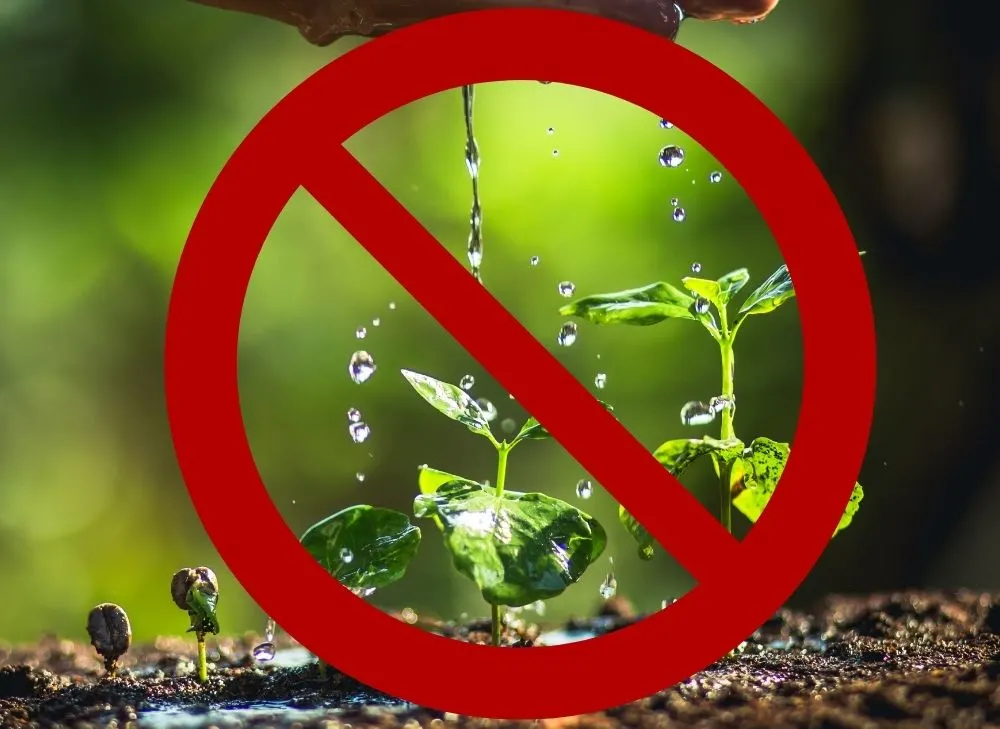
Condenser dryer water is not safe for consumption. It is likely to contain at least traces of fragrances, lint, dust, metals, bacteria, mold, mildew, and/or algae. All of these can cause negative health effects. Edible plants must also not be watered with this water.
Do Not Drink Dryer Water
Based on the mechanics of how a condenser dryer works, the water left over in the tank at the end of each cycle is technically distilled, meaning that the water was evaporated from the damp clothes, cooled, and then condensed back into a liquid.
Although we tend to think of distilled water as “pure”, this isn’t the case when talking about the distilled water produced by condenser dryers.
Since condenser dryers are closed-loop systems, the water in the tanks is exposed to all parts of the dryer, which can host numerous organisms and chemicals during each cycle.
Consequently, ingestion of the condensed water is strongly discouraged as it also means ingestion of all that the water has come into contact with. Don’t risk your health; there are many other ways to reuse condenser dryer water.
Possible Contaminants in Dryer Water

Perfumes
Anyone who has accidentally left their mouth open while spraying perfume or cologne will tell you that ingesting any type of fragrance is not a pleasant experience. Aside from the taste, accidental consumption of perfumes can lead to negative health effects.
The water collected in the condenser dryer tank is likely to still contain traces of perfume that was not washed off clothing or which was present in the fragranced washing powders or soaps.
Almost all fragrances contain some type of alcohol ranging from 20-95% in proportion, most containing ethanol, which is the type of alcohol we find in our alcoholic beverages. However, some fragrances contain more dangerous alcohols, the same as those found in antifreeze.
Depending on the amount of fragrance consumed, some negative health effects thereof include drowsiness, depressed breathing, and potentially seizures. These side effects are seen even more severe in children.
While it is unlikely that you will consume enough fragrance to experience any of these effects, there is still the chance that you or a loved one are sensitive to the chemicals present, or they could interact with medications that you are taking, leading to a severe reaction.
If nothing else, drinking fragranced water is not going to taste very nice.
Lint
As clothes dry, there is also a risk for lint to settle in the water collection tank at the end of the cycle.
For adults who have a more mature digestive system, it is less likely that there will be mechanical damage to the digestive tract. However, if a child digests lint, there is a chance that somewhere along the digestive tract, it may accumulate and cause a blockage.
In addition to these more mechanical risks, a study conducted at the University of Plymouth found that dryer lint actually contained trace amounts of metals, including lead and antimony, in half of their samples.
Chances are you’ve heard of the negative effects of lead poisoning in children. These symptoms can include delayed development, behavioral issues, and nervous system problems.
But did you know that lead can also be a serious problem in adults? It can lead to infertility, increased blood pressure, and decreased kidney function. Even small amounts of lead (such as those found in lint) have resulted in these adverse effects in adults.
Antimony, another metal found in the studied lint, can cause local irritation of the digestive tract, as well as diarrhea, stomach pain, and eventually stomach ulcers. As with lead, even small amounts of antimony can pose dangerous health outcomes if consumed in dryer water.
Dust
Another common particulate to be found in condenser dryer water is dust. I don’t need to explain to you how dust can get into the dryer’s water collection tank—if dust is around, it will get in just about anywhere.
Just as dust can irritate the respiratory tract, swallowed dust can also cause irritation of the digestive tract. This irritation can potentially lead to gastrointestinal infections if not treated properly. Gastrointestinal infections can then create a whole new set of health problems for an individual.
Bacteria
According to the American Society of Microbiology, our laundry is a petri dish for the growth of bacteria. The bacteria left behind from our dirty clothes then gets circulated through our washing and drying machines and, if not cleaned properly, can begin to multiply.
It is a common misconception that the high heat from a drying machine can kill all bacteria within the system.
This is true for some bacteria, but there are other types that can survive and start to multiply when the drying cycle is over, and the bacteria are left with the moist, slightly cooled environment of the collection tank.
If the collection tank is not emptied after use, the bacteria could survive and grow for weeks on end.
Some of the bacteria associated with textiles and which can subsequently end up in a collection tank include Salmonella, MRSA, and E. Coli. These harmful bacteria can cause major enteric disease, as well as skin infections and, are able to survive the temperature extremes of the laundering process.
Mold, Mildew, and Algae
Unfortunately, the warm and moist environment of your condenser dryer is a perfect place for other organisms, such as mold, mildew, and algae, to flourish.
One specific type of mold called Cladosporium Herbarium can be found in condenser dryer tanks. This type of mold is most frequently found in the air, but it can find its way into condenser tanks and grow due to poor ventilation, high temperatures, and a wet environment.
Mildew, although less dangerous than mold, can also be found in the dryer tank due to the closed system and moist environment. Anyone who has accidentally forgotten about their laundry in a dryer would tell you that the smell of this mildew in and of itself would be enough to turn you away from using this water for drinking.
Although rare, algae can also find their way into the laundry and thrive in a dryer tank. If you or your family have had a day at the beach, algae spores could actually dry and be transported right into your laundry room. Once these spores meet water and sit in a wet area like the collection tank, they can continue to grow and reproduce.
Do Not Use Dryer Water For Edible Plants
Well, if humans can’t consume the water collected from the condenser dryer, can it at least be used for plants? Yes, in some cases, it can be used to water plants. However, you have to avoid using it for any plants that you are going to be eating and fleshy plants.

Just as we use water to nourish and hydrate our bodies, plants do the same with the water that they are given. Since water from the condenser dryer contains all the harmful substances explained above, watering a plant a delicate, potted, fleshy, or edible plant with it is not recommended.
By watering an edible plant with contaminated water, the contaminants will also find their way into the flesh of the plant and therefore cause contamination to the human consumer of the plant.
Besides edible plants, watering fleshy plants with contaminated water will hinder their growth and could potentially show visible signs of deterioration within the plants.
Tougher, older plants that are planted in the ground and are not going to be consumed by humans or animals may be fine with condensed dryer water.
Sources
https://www.youtube.com/watch?v=GC6XCBsrgZI
https://aeg-appliances.ca/condensation-dryers-explained/
https://www.poison.org/articles/windshield-washer-solution
https://www.thelist.com/186671/what-happens-to-your-body-if-you-accidentally-drink-perfume/
https://www.ncbi.nlm.nih.gov/pmc/articles/PMC4937060/
https://www.ncbi.nlm.nih.gov/pmc/articles/PMC2822166/
https://www.ncbi.nlm.nih.gov/pmc/articles/PMC4672060/
https://thewaterway.com/kind-water-best-plants/
https://www.shponline.co.uk/noise-and-vibration/toxic-dust-behavioural-change/
https://www.leedsth.nhs.uk/assets/fa698f54dd/Mould_Allergy_Advice_original.pdf
https://www.sepro.com/aquatics/algae-corner/algae-corner-where-do-algae-come-from
